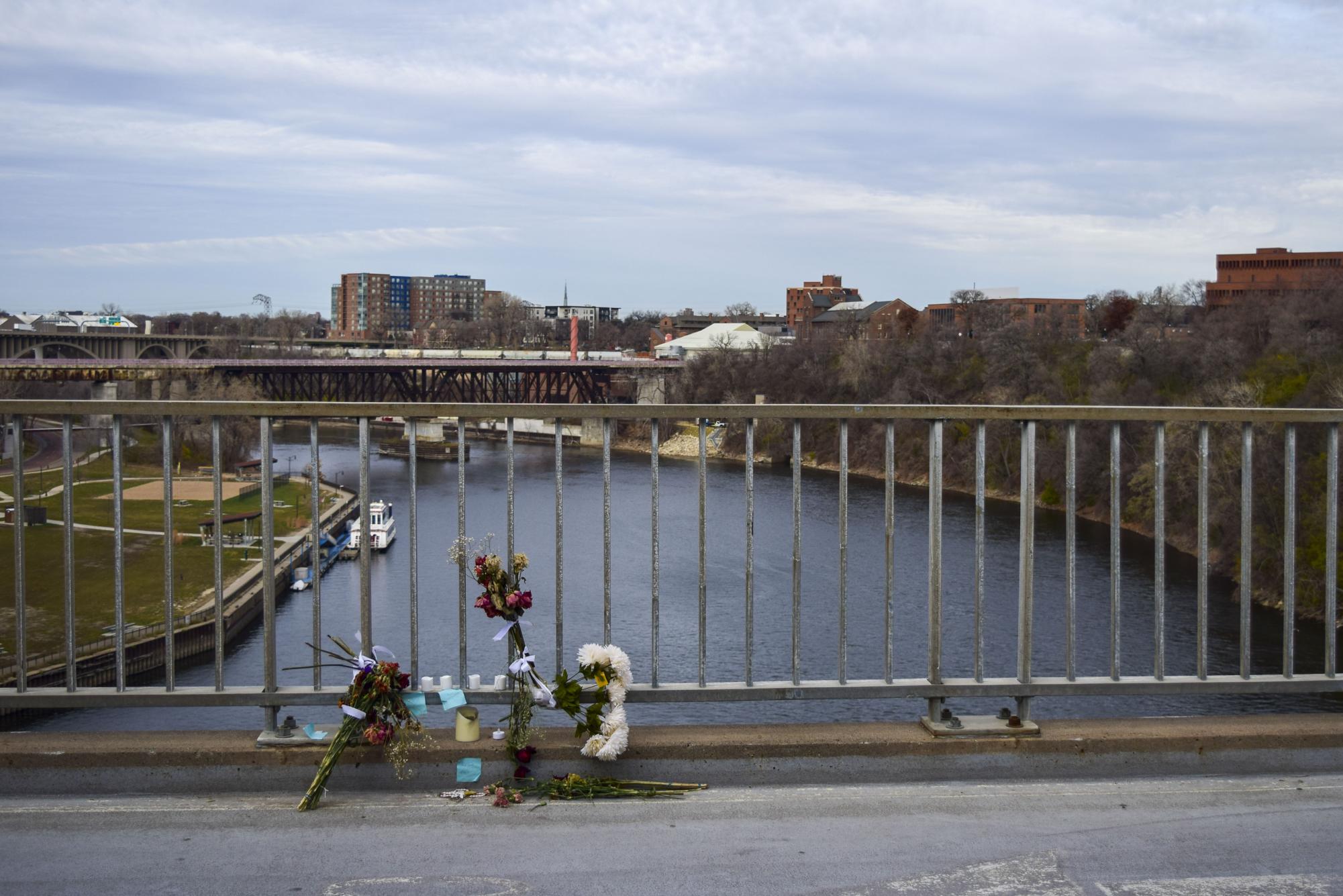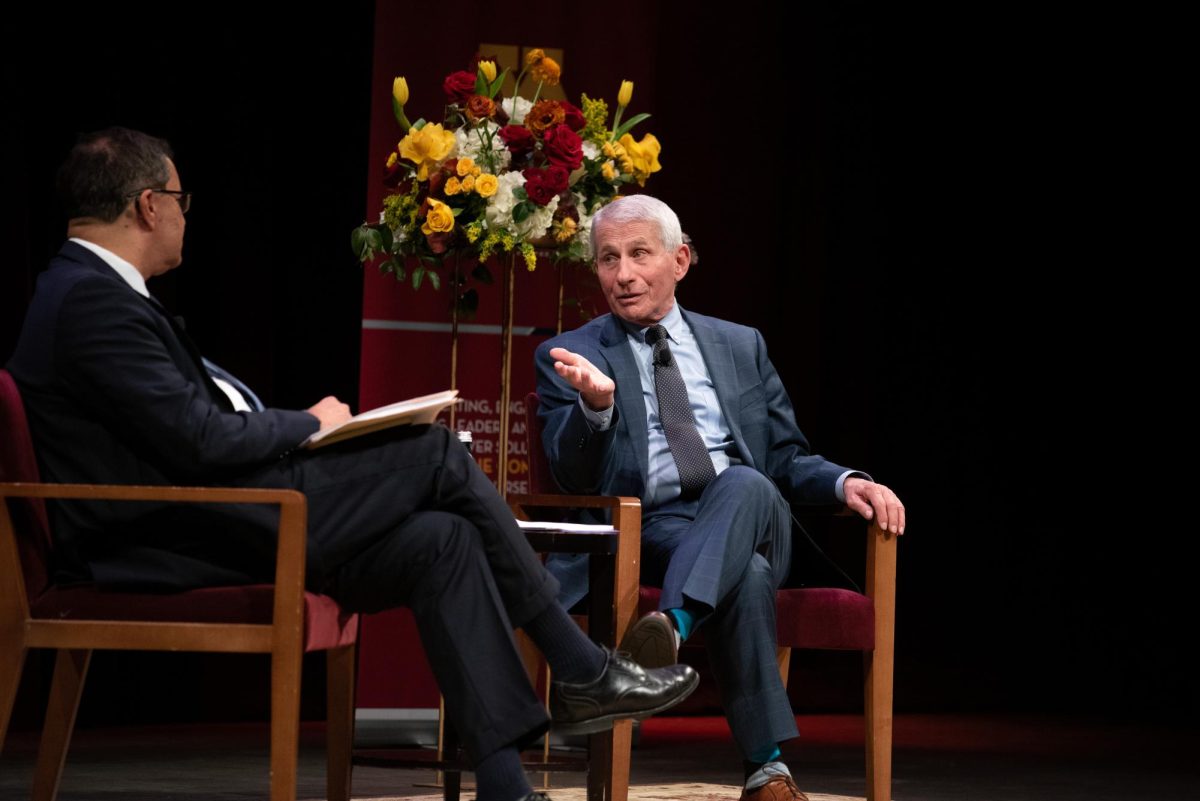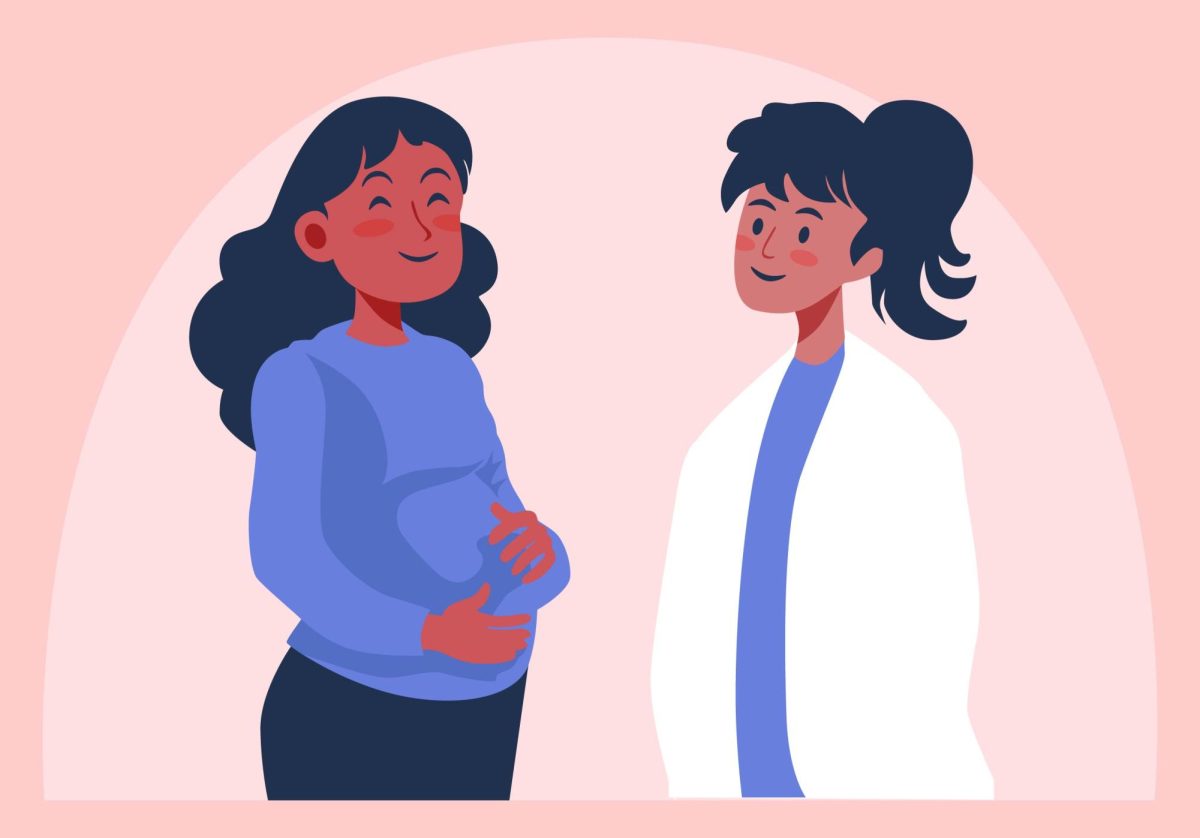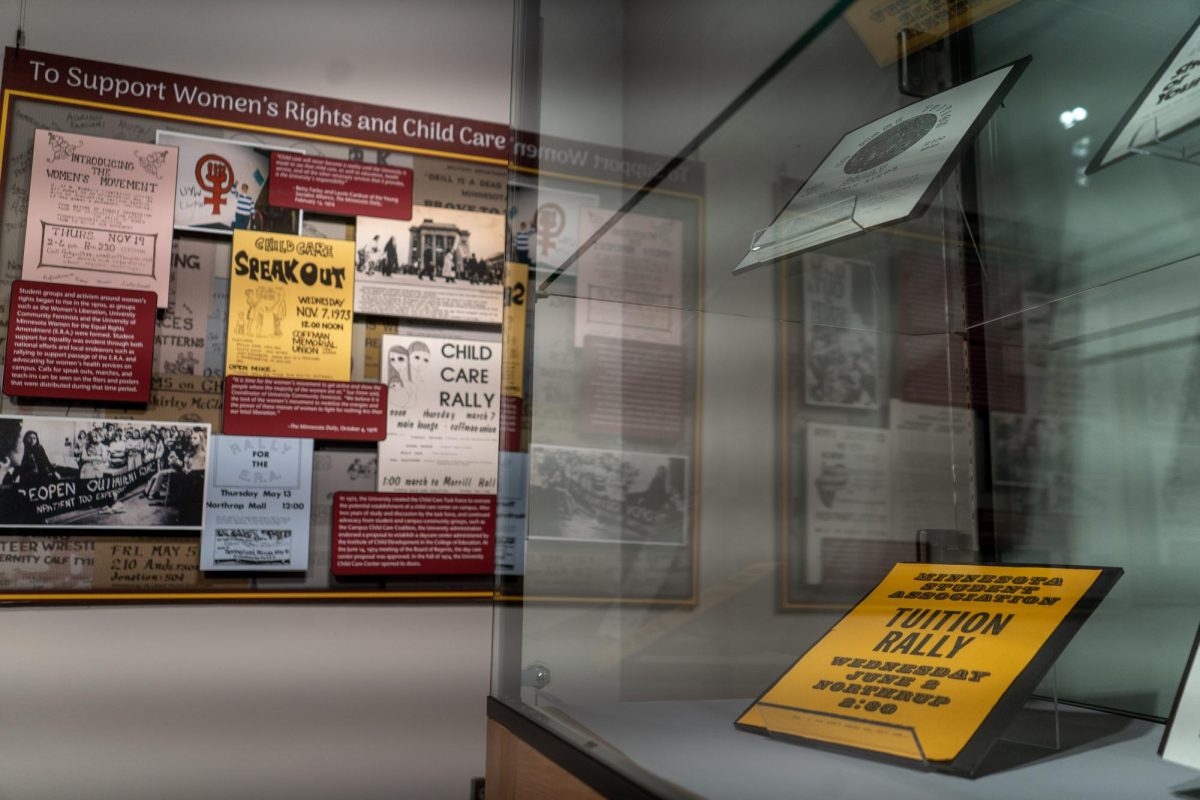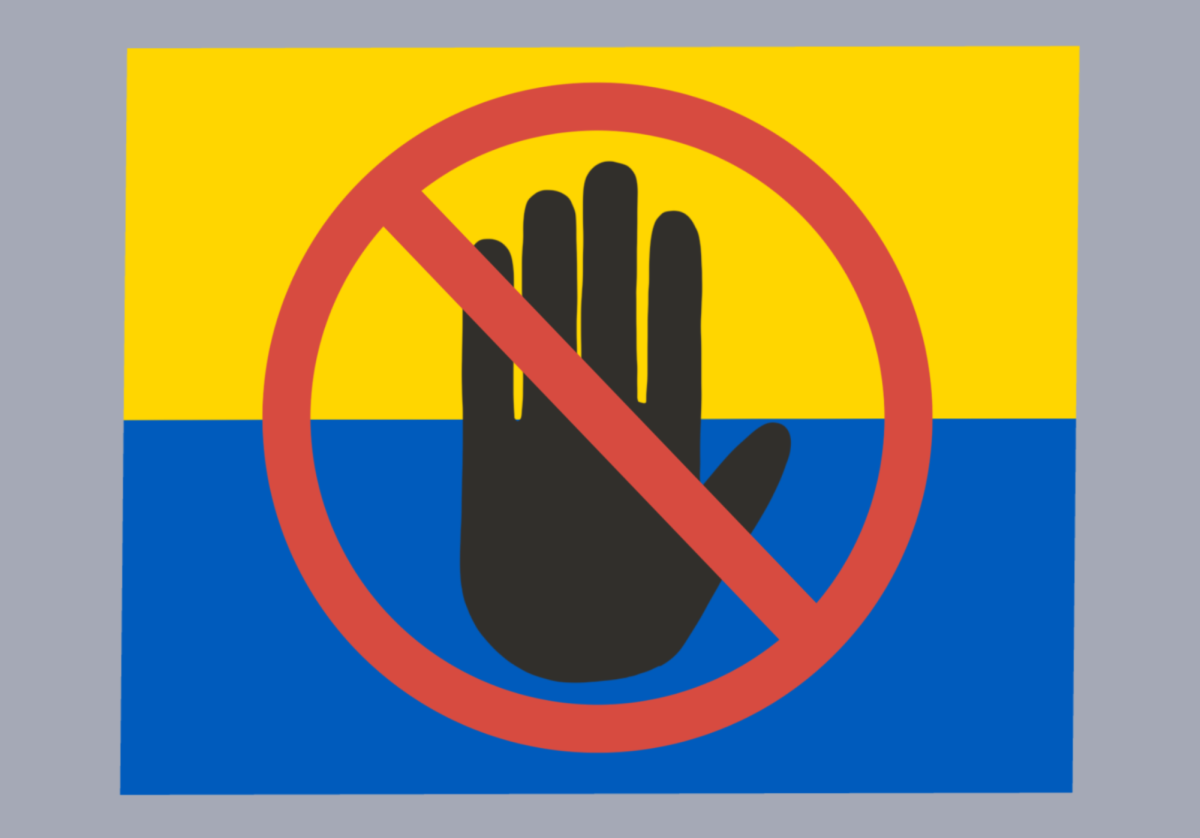Mary Jo Weiss and Gina Morgan sat at the wooden kitchen table with a neglected can of Diet Coke, the dimming daylight streaming through the windows of the room. Still in her scrubs after arriving home from her nursing job, and two days before hosting a Thanksgiving meal for 15 members of the family, sisters Weiss and Morgan began to tell Kayla’s story, who died by suicide just days before. Her body had not yet been found.
“She was getting ready to plan her own wedding,” Weiss, who is Kayla’s mother, said. “The deepness of that depression was totally out of the blue. … This is just such a shock to our family.”
Former University of Minnesota student Kayla Gaebel, age 29, died by suicide on Nov. 9. She had a fiancé, two young children and multiple career opportunities, according to Weiss.
“She just had a smile on her face, and she was lovable, mischievous,” Weiss said.
Weiss researched information about the Washington Avenue Bridge after her daughter’s death to understand why her daughter thought to leave her home. Weiss discovered online that other people had died by suicide at the same location.
After recent deaths involving the bridge, family members, students and the University of Minnesota are looking to improve the bridge’s safety measures.
Concerns surrounding the bridge’s safety have increased after multiple deaths in 2023. Throughout the last five years, the University has attempted and continues to push for funding to implement safety precautions on the bridge.
“Come to learn this is not uncommon,” Weiss said. “That was really gut-wrenching.”
According to Hennepin Water Patrol Lt. Richard Rehman, a majority of the deaths involving Hennepin County bridges in 2023 involved the Washington Avenue Bridge.
According to Rehman, the Washington Avenue Bridge often has one or two more deaths each year compared to other bridges in Hennepin County.
After researching the bridge, Weiss and Morgan, started asking more questions about why there have been numerous deaths at that location.
“Why are we not taking action?” Weiss said.
Weiss added she does not understand why deaths involving the bridge seem underreported.
Safety organizations, according to the National Institutes of Health, intentionally underreport statistics to not encourage copycats.
Twenty-four hours after Gaebel was reported missing, the Shakopee Police Department tracked Gaebel’s GPS in her car to the University campus and then contacted the University of Minnesota Police Department (UMPD) to look at the bridge’s security cameras.
According to UMPD spokesperson Jake Ricker, there are more than 5,400 security cameras installed on the University campus that are constantly monitored by the Public Safety Emergency Communication Center (PSECC). PSECC is a dedicated 24/7, 911 call center and dispatch center on campus.
If PSECC sees someone on the bridge who has been out there a long time or looking unwell, they will dispatch UMPD officers to do wellness checks on folks that they observe on the bridge, Ricker said.
“UMPD is aware of the need for prevention on the bridge,” Ricker said. “The problem with increased patrol is there are just finite staff resources.”
Along with officer responses on the bridge, there is posted signage with messages of hope and the number of a crisis hotline. According to Jeff Walter and Cecilia Bloomquist, psychotherapists at the Student Counseling Services and Boynton Mental Health, respectively, there are plenty of mental health resources for students in need.
These resources include group therapy, one-on-one counseling, urgent counseling and a crisis hotline. Both Walter and Bloomquist said utilizing these resources has been proven to save lives and be an effective intervention method.
“We have been saving lives every day,” Bloomquist said.
However, Weiss and Morgan said these resources are not enough.
In their research, Weiss and Morgan found a Minnesota Daily article from 2017 that highlighted efforts to implement safety precautions on the Washington Avenue Bridge, including installing a 9-foot-tall safety railing. These precautions were never implemented due to “high costs, effectiveness and view obstruction.”
“For [Kayla] and others, in 2017, whenever people had first started to come for change, lives would have been saved,” Morgan said. “Her life would have been saved if change would have happened back then, and Kayla would probably be with us today.”
Erin Brumm, a University student parent and member of the Campus Safety Coalition, said she is aware the bridge has multiple problems and is disappointed nothing came from the efforts for change made in 2017. Brumm said the UMN task force should be student led and ongoing.
“It shouldn’t go another five years where people are just kind of kicking around talking about it not taking action,” Brumm said. “This is a U of M problem.”
Weiss said that while there are cameras, she wishes there was more to deter people, such as alarms or strobe lights to distract people in distress to increase safety.
Many bridges in the United States have installed safety precautions to prevent deaths. The Golden Gate Bridge installed a net to prevent deaths off the bridge in 2023.
Effective methods of suicide prevention include removing access to lethal means, offering mental health support and enhancing a sense of purpose and belonging, according to Bloomquist and Walter.
In their efforts to inspire change, Weiss and Morgan contacted UMPD, Sen. Amy Klobuchar, Gov. Tim Walz and University Services Vice President Alice Roberts-Davis.
According to Roberts-Davis, the University is already working towards changes on the bridge. Roberts-Davis said that for the last five years, the University has lobbied Minnesota legislators to grant funding for the Washington Avenue Bridge but has not received any thus far.
The University has asked for $500 million for Higher Education Asset Preservation dollars to fix buildings on campus that have “serious deficiencies.” Within that allotment, $15 million would be designated for “securing and improving the Washington Avenue Bridge,” according to an email Roberts-Davis sent to Weiss.
While the Washington Avenue Bridge belongs to Hennepin County and not the University, Roberts-Davis said the University still provides funding for security improvements to make it safe.
Roberts-Davis said efforts are still being made, with the help of Weiss, students and the University community, to gain funding and prevent future deaths. She added she encourages students to testify or write petitions to push legislators into funding safety improvements on the bridge.
“We’ve thought about how can we potentially limit the ability to use the walkway along the water at night,” Roberts-Davis said. “Because of code issues we aren’t able to do that, so we really do just have to rely on the safety measures that are in place with the cameras, the signage and the blue lights and monitor activity on the bridge for now.”
According to Roberts-Davis, there is a lot to take into consideration when it comes to changes on the bridge including safety, how easy it will be to maintain and what will be “aesthetically pleasing” while “keeping in mind that we don’t actually own the bridge.”
Community members can do their part to prevent suicide by looking for warning signs, utilizing mental health treatment and resources available to them and learning how to de-escalate situations through educational programs provided by Boynton Health and Student Counseling Services, according to Bloomquist and Walter.
Bloomquist and Walter added warning signs include, but are not limited to, academic struggle, depression, mood changes, anxiety, uncontrolled anger, risky activities, neglecting hygiene and increases in alcohol and drug use.
After days of searching, Hennepin County Water Patrol was able to find Gaebel, bringing some peace to Weiss and her family. Even still, Weiss still has hope for change in the future.
“I want to make something hopeful come out of this tragedy,” Weiss said. “Bring some good out of this by being strategic and planful.”
If you are having suicidal thoughts or are experiencing a mental health crisis, contact the University Crisis Line at (612) 301-4673 or by texting “UMN” to 61222 to receive support 24/7.
Boynton Urgent Mental Health: https://boynton.umn.edu/urgent-crisis-counseling
Let’s Talk: https://counseling.umn.edu/LetsTalk
Student Counseling Services: https://counseling.umn.edu/
Learn to Live: https://www.learntolive.com/partners?code=UMN&utm_source=UMN&utm_medium=Website_Boynton-Health&utm_campaign=General
This article has been updated.






